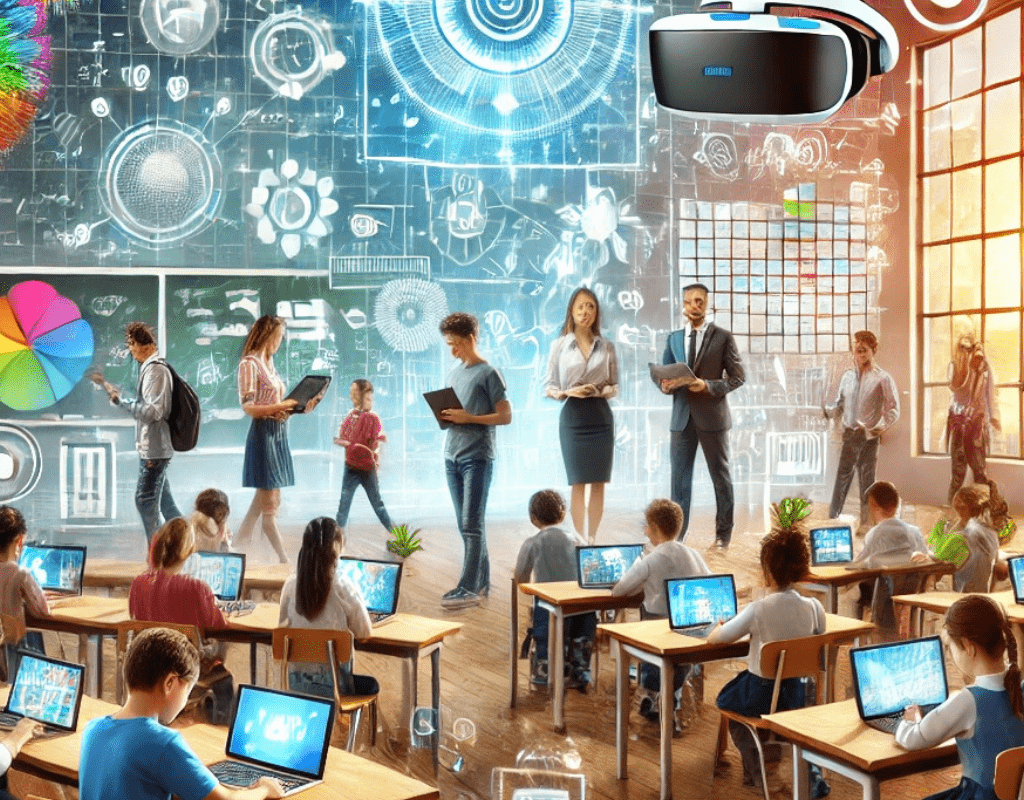Introduction
Gamification in Classrooms – Technological advancements and innovative teaching methods are driving rapid change in education. Among them, gamification has become quite an effective instrument to improve student involvement, drive, and learning results. Teachers are finding innovative approaches to make their lessons more engaging, fun, and effective by incorporating gaming components into the course of instruction. But just what is gamification, and how is it transforming schools all around?
Definition of gamification
Gamification is the use of game-design components—such as points, badges, leaderboards, and levels—in non-game settings, including education. Unlike more conventional approaches, gamification uses the psychological triggers—competition, success, incentives, and instantaneous feedback—that make games so engaging.
Clear-cut gamification in classrooms from game-based education should be clear-cut. While gamification combines game elements into the larger learning environment, making daily classroom tasks more engaging and goal-oriented, the latter utilizes real games for instructional purposes.
Why Gamification Functions
Gamification in classrooms is most effective in promoting both intrinsic and extrinsic motivation. Games inherently provide a challenge and a reason for existence. Students who receive instantaneous feedback or witness their development in real-time are more likely to remain motivated. Gamification in classrooms suits many learning environments and fosters both healthy competition and teamwork.
Moreover, gamified surroundings can let one fail without facing severe penalties. By reflecting real-world problem-solving, this trial-and-error technique helps pupils develop resilience and tenacity.
Essential components of gamification for learning
Classroom gamification makes frequent use of many game mechanisms:
1. Points and Schemes
Giving points for finishing assignments, tests, or acting honorably produces an objective system of success. As their grades improve, students feel successful, which drives them to engage more actively.
2. Badges and Awards
Badges honour specific achievements, such as project completion or subject mastery. Participation is also encouraged by tangible advantages, such as classroom privileges or small gifts.
3. Leaderboards
Leaderboards show pupils how they rank compared to their classmates, thereby introducing a competitive element. Although this could increase participation, it should be used carefully to prevent demotion of underachievers.
Level 4: Progression
Gamified learning often includes levels denoting development across materials. Students “level up,” unlocking new information or challenges, thereby establishing a path of growth.
Missions & Quests 5
Viewing tasks as missions or quests lends learning a more narrative component. This narrative element gives even daily chores meaning and appeal.

Classroom Benefits of Gamification
1. Great Engagement
Gamification keeps pupils interested in the course of instruction and catches their attention. Changing passive learning into an active experience helps pupils to remember material and engage voluntarily.
2. Enhanced inspiration
Gamified settings make pupils feel appreciated for their successes as they reward effort and advancement. Students who see well-defined objectives and get comments on their performance are more motivated.
3. Building Cooperation
Many gamification techniques involve team-based events that require coordination and effective communication. Within the classroom, this fosters camaraderie, empathy, and social skills.
4. Enhanced Learning Results
Gamified environments enable students to achieve better academic results more commonly. Gamification’s interactive nature enhances critical thinking, problem-solving, and creativity—qualities essential for the twenty-first century.
5. Promoting Self-Paced Learning
Gamified systems can adapt to individual learning paces. Students may repeat tasks to address difficulties, allowing for varying degrees of ability and thereby promoting a more customised learning environment.
Difficulties and Think Throughs
Though gamification in schools offers numerous benefits, it also brings several difficulties:
1. Overemphasising Rewards
An inappropriate balance may cause external rewards, such as points or prizes, to overshadow internal drive. Teachers must ensure that pupils are studying for knowledge rather than just for incentives.
2. Inclusiveness and Equity
Particularly for kids who struggle academically, leaderboards and competitive aspects could alienate or demotivate some of them. Every student should feel appreciated and given opportunities to flourish in a system designed for them.
3. Resource-intensive
Creating and maintaining a gamified classroom can be time-consuming and require access to technologies that are not always available. Teachers must have sufficient tools and guidance if they want to use gamification effectively.
4. Curriculum Alignment
Activities and games must align with learning goals. Gamification can transition from a tool for learning improvement to a distraction without proper integration.
Classroom Real-World Gamification Examples
1. Crafts
Designed for classroom usage, Classcraft is a role-playing game wherein students assume characters with special skills. Completing assignments, assisting friends, and attending class count towards points. Apart from matching academic aims, the game promotes teamwork and moral behavior.
2: Kahoot! and Quizizz
These sites make tests competitive, game-like events. Real-time question answers by students result in points for correctness and speed. Review sessions and formative evaluations are great tools to make use of.
3. Duolingo
Duolingo gamifies language learning with levels, streaks, and accomplishments, making it accessible beyond the classroom. It’s a standard tool used by teachers to enhance entertaining and engaging ways to develop linguistic abilities.
4. Minecraft: Education Edition
Teachers may design immersive learning opportunities using this kind of Minecraft. From virtual world development and interaction to exploring historical monuments and simulating scientific experiments, students learn by doing.
Advice for Educators Using Gamification
Here are some doable ideas if you are thinking about incorporating gamification into your classroom:
1. Start small
Start with one game mechanic—perhaps a scoring system or weekly missions—then progressively expand. This enables you to evaluate what is best for your kids and control your workload.
2: align with learning objectives
Ensure that every gamified activity aligns with your curriculum. Games should not replace but rather help to reinforce and evaluate essential ideas.
3. Output Meaningful Comments
Gamification is mostly about feedback. Regarding both academic material and effort, ensure that pupils are aware of their strengths and areas for improvement.
4. Be Including
Create gamified experiences that cater to varying degrees of ability and learning style preferences. Provide multiple avenues for success so that every learner may feel successful.
5. Consider and Change
Review often how well your gamification plan works. Obtain feedback from pupils and be prepared to adjust your strategy according to their needs and reactions.
Gamification’s Prospect in Education
The possibility for gamification will only increase as digital technologies are increasingly included in the classroom. Exceptionally, emerging technologies such as augmented reality (AR), virtual reality (VR), and artificial intelligence (AI) will provide more immersive and flexible learning opportunities.
Moreover, because both stress mastery, progress, and customized learning routes, the move towards competency-based education fits very well with gamification. Gamification will likely play a crucial role in shaping how students engage with material and acquire essential life skills as educational paradigms evolve.
Conclusion
More than just a fad, gamification is a transformative method of instruction that makes learning dynamic, student-centred, and highly engaging. Teachers can encourage inquiry, teamwork, and a lifelong love of learning by harnessing the motivating power of games.
Although gamification presents some difficulties, its careful use can transform any classroom into a dynamic, interactive environment in which students actively participate in their learning process, rather than being just consumers. Gamification is an intriguing window into what’s feasible when joy meets purpose as we consider the direction of education.




